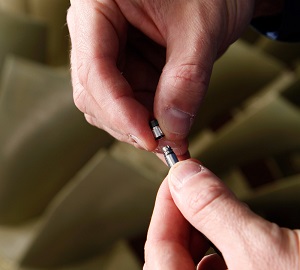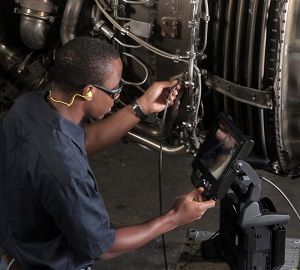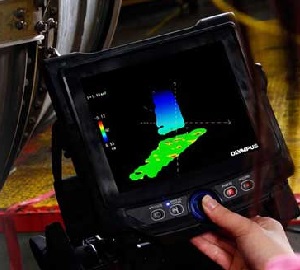Remote Visual Inspection (RVI)
Remote Visual Inspection (RVI)Welcome to our remote visual inspection (RVI) resource page, a hub for videoscope and visual inspection questions, articles, and training materials to support both experts and beginners looking to use RVI testing. |
What is remote visual inspection?Remote visual inspection, also known as RVI, is a nondestructive testing (NDT) technique that uses visual aids to inspect areas of infrastructure from a distance that are too dangerous, remote, or inaccessible for direct visual inspection. RVI technologies include remotely operated cameras, borescopes, videoscopes, and fiberscopes. |  |
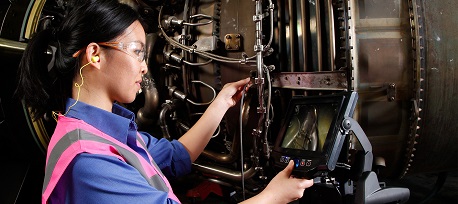 | How does remote visual inspection work?Remote visual inspections enable visual observations to be performed remotely via external camera-based equipment. Videoscopes are used to access the target area, while video technology enables an inspector to analyze the area from a distance through a monitor. Image data can be viewed in real time on the screen and recorded for further assessment, analysis, and reporting. |
|---|
What are the benefits of remote visual inspection?The main benefit of remote visual inspection is that it enables the examination of critical infrastructure and components in inaccessible or confined areas, making it more cost-effective and efficient than inspection methods that require disassembly of assets or service disruptions. It also reduces safety risks as operators can inspect potentially hazardous areas from a distance. | 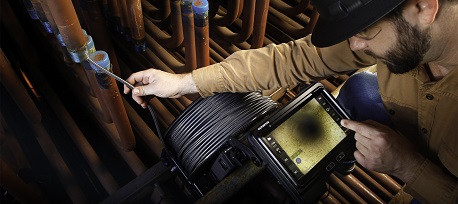 |
Remote Visual Inspection FAQs
Why is remote visual inspection important?
The importance of remote visual inspection cannot be understated. Visual inspections are important as they allow for quality control, analysis, risk assessment, and acquisition of data. Visual inspections help ensure the efficiency, safety, and longevity of equipment and assets across a range of industries and applications.
However, it is not always possible to perform visual inspections directly. This is when remote visual inspections have clear benefits. Remote visual inspections assist with quality control and data acquisition in instances where it is not safe or practical for inspectors to do so. There are a variety of intelligent remote visual inspection tools available to meet the demands of modern industrial inspections.
How can you improve the effectiveness of remote visual inspections?
Videoscope and borescope inspection procedures can improve the effectiveness of remote visual inspections, particularly when looking at difficult-to-access areas. Where human testing capabilities may be limited, the latest videoscope technology helps increase the speed and efficiency of inspections. Using remote visual inspection equipment that is easy to maneuver and use means you can save time and enhance the quality of inspections while increasing the probability of detection.
Read about a real-world example of how RVI can improve the effectiveness of visual inspection in aerospace components in our application note, Exploring the Latest Advances in Remote Visual Inspection and 3D Stereo Measurement.
How do you use remote visual inspection equipment?
How to use a borescope or videoscope depends on the type of inspection camera you use, and there are different things to take into account depending on your needs and application. Before you start, make sure to determine the length and the diameter you need for your insertion tube, as well as whether a rigid or flexible insertion tube is best suited to your testing area and application.
When using an industrial videoscope, there are some general steps to follow to ensure effective and accurate use. These include:
Prepare your equipment and testing site.
Once you have selected the right type of borescope or videoscope for the job at hand, check the device is ready for use. For example, is it set up correctly, and is it charged? Next, you should make sure the target area has been made as accessible as possible in preparation for your RVI testing. Checking the environment is also important—temperature, pressure range, and chemical compatibility for your specific borescope or videoscope are all things that should be considered before you begin.
Insert and maneuver the scope carefully.
When using the borescope, position it carefully. Always move through your testing area slowly and gradually without forcing the insertion tube. Be cautious to avoid causing damage to the scope and lens, and move slowly to ensure you don’t miss any important evidence. Consider the internal structure you are working with when maneuvering the scope, and always keep an eye on the video or monitor to assess your movements and next steps.
As mentioned, using a borescope or videoscope comes down to your specific equipment and applications. We recommend exploring relevant application notes, videoscope manuals, or product-specific instructions before performing an inspection.
Remote Visual Inspection Training Resources
Our resources and tutorials offer practical learning solutions and comprehensive training on a range of RVI products and technologies. Whether you are looking for video tutorials on videoscopes or to take your RVI knowledge further with specific application information, our RVI resources enable you to learn directly from our in-house experts.
RVI Webinars: Here you can access all our remote visual inspection webinars in one place. Watch now to hear experts share tutorials and tips related to NDT inspections, borescopes, and videoscopes. | RVI Videos: Our RVI test videos offer comprehensive training and information on our videoscopes. This includes application information, product-specific borescope tutorials, and product feature videos. | RVI Application Notes: Our RVI test application notes cover real-word examples of borescope and videoscope inspections, from internal structures of turbine blades to remote visual inspection for automotive applications. | Other RVI Resources: On this page you can access our wide range of training and resource materials for RVI inspections and testing. Find relevant brochures, manuals, infographics, and white papers. |
Remote Visual Inspection Equipment

Videoscopes
Outstanding image quality and brightness delivered to high-resolution LCD monitors enable inspectors to see into difficult-to-access locations, such as the inside of an engine or turbine. Simple to use and offering advanced features, including HD video, 3D modeling, and video/image recording, our videoscopes are leading visual inspection tools.

Fiberscopes
Our fiberscopes are flexible inspection instruments. Fiberscopes use a coherent fiber bundle that transmits images of the inspection area back to the inspector’s eye. Our small-diameter fiberscopes can inspect narrow, difficult-to-access areas.
